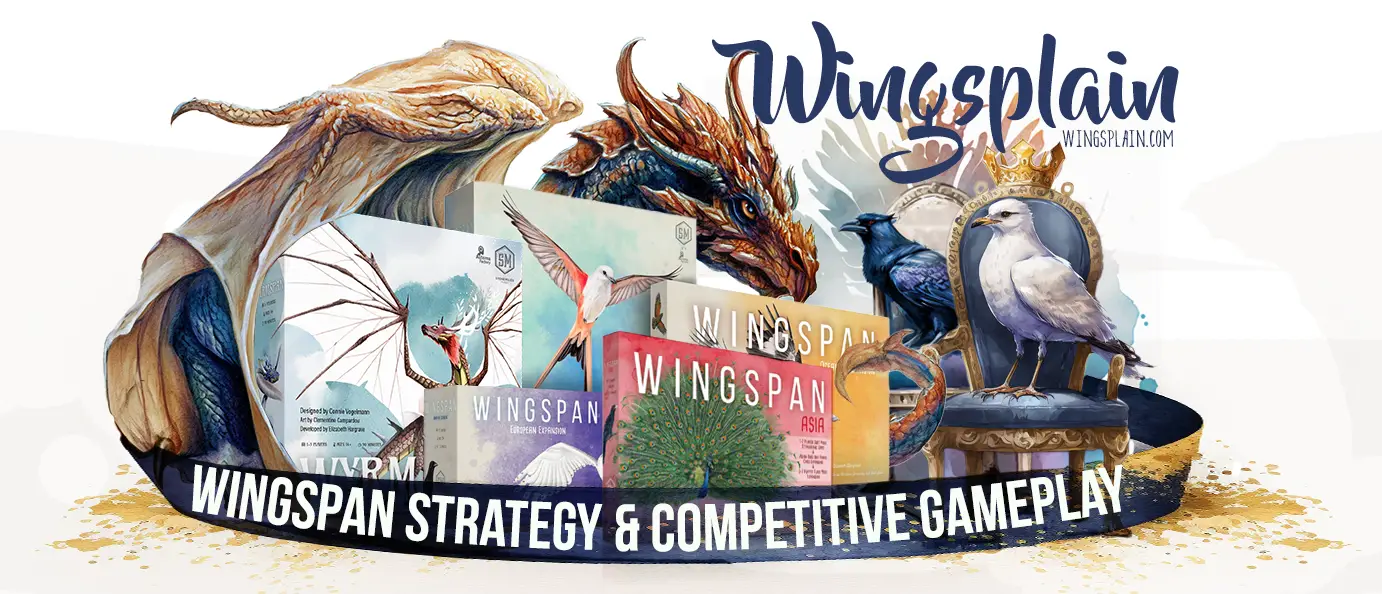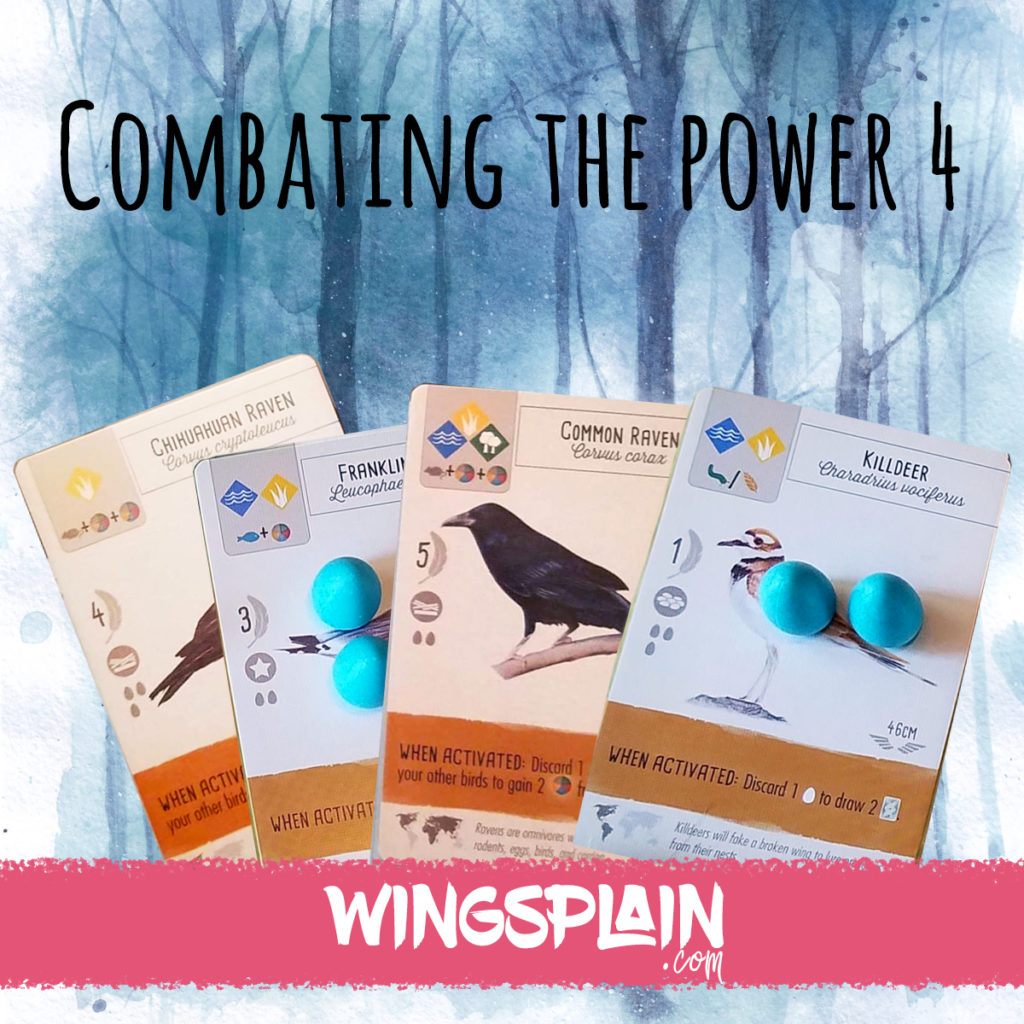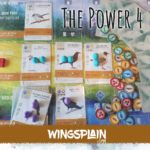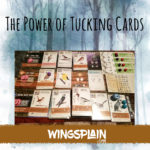Want to know how to beat Ravens, Franklin’s Gull, and Killdeer in Wingspan?
In this article, I’m going to break down the nuances of beating the best cards in Wingspan. Chihuahuan Raven, Common Raven, Franklin’s Gull, and Killdeer. I referred to these top cards as “The Power 4”.
Something I want to point out in the beginning is that these are just opinions. I try to take a big-picture view of the whole game and present potential ways to combat a specific strategy as they are available. Some options are objectively better than others.
Wingspan has a large card pool that will only continue to grow. We aren’t going to see every card in every game, so I offer some suggestions that utilize lower-impact cards for when the higher-impact cards aren’t available. Veteran players, please keep this in mind as you read and want to yell at me for suggesting certain options. With that said, on with the article….
Some images are taken from Wingsearch.
Common Raven, Chihuahuan Raven, Franklin’s Gull, and Killdeer in Wingspan
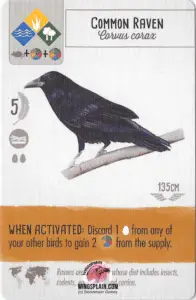
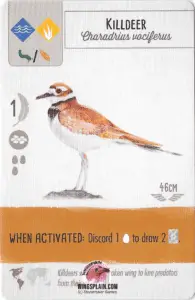
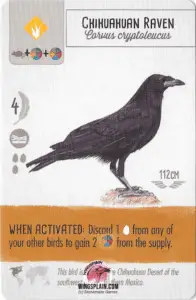
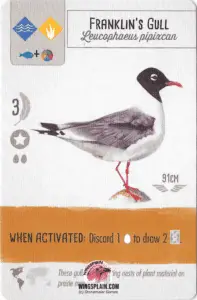
First of all, let’s look at what these cards actually do:
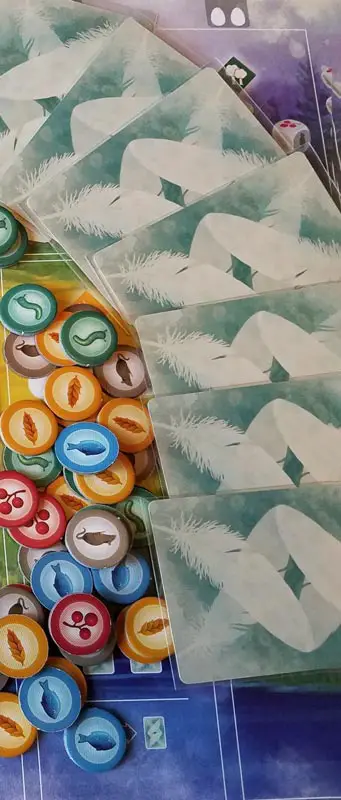 Ravens: They generate food and eggs in the same activation.
Ravens: They generate food and eggs in the same activation.
Franklin’s Gull/Killdeer: They generate cards and eggs in the same activation.
Raven-Gull/Deer: They generate food, cards, and eggs in the same activation.
When the most potent form of this engine is activated, it nets one victory point (one net egg), two food, and two cards. Activated twice, it nets two victory points (eggs), four food, and four cards. These are enough resources to play any bird in any location. They then have to spend a turn to convert the food and cards into victory points (Play A Bird Action).
They are probably going to work on building out their Grassland engine and dropping high-point value birds and/or birds with high egg capacity in the Forest and Wetlands. Tuck/Draw birds pair especially well with Gull/Deer in the Grasslands as they amplify the point scoring and card cycling capabilities (card advantage) of each action.
Unfortunately, there aren’t any singular actions that directly punish this engine in a significant way that also put you in a position to have the highest score at the end of the game. Accumulating small “punishments” and building an equivalent or superior point-scoring engine will be the key to victory.
But that’s Wingspan. It’s not about dropping hammers and blowing up your opponents. It’s not about “gotcha” plays. It’s about building an engine into the crescendo that is your final score.
That’s one thing I love about Wingspan. There aren’t any “gotcha” plays that ruin everything you’ve been working on up to that point. There are plenty of other games out there for that *shakes fist angrily at Munchkin*.
With all of this in mind, let’s look at some of the ways of how to beat Ravens, Franklin’s Gull, and Killdeer engines in Wingspan.
1. Don’t Help them Seal the Victory
Try to avoid excessive use of birds that give resources to all players. This will only exacerbate the problem.
Contrary to this point, I’ve spoken to some who believe flooding The Power 4 (P4) with food and cards while you benefit from shared resource birds is a good way to close the gap between you and them. I don’t necessarily agree with this.
If a P4 player has no food or cards, giving them food or cards will just end up saving them eggs or actions that can be used to convert those resources into points, namely through the Play A Bird Action. It would be as though they didn’t have P4 at all because they are just getting everything they need from you. If they use P4 on top of those shared resources, they are just playing at double the pace and can drop more point bombs more often, especially “Play Another Bird” (PAB) combos.
Wingspan has two distinct “phases” of play.
The first phase of the game is generally about gathering resources in order to establish some type of point-scoring outlet. The second phase of the game is generally about activating that point-scoring outlet as much as possible with your remaining actions. Flooding P4 with resources helps them get past the resource-gathering phase at a much more accelerated rate than you.
This fact should not be overlooked, and it is an important thing to understand. It is especially problematic if they happen to have birds like Eurasian Collared Dove, Common Starling, or birds like them. These birds can convert excess food or cards into points. The perfect outlet for a flood of food and cards.
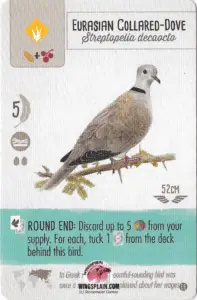
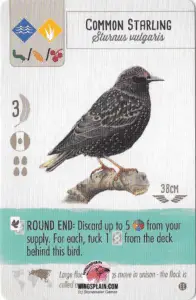
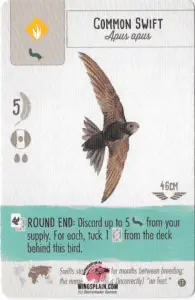
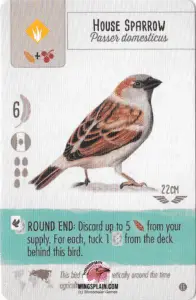
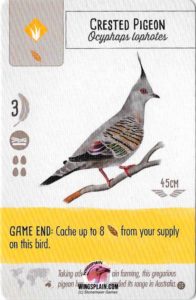
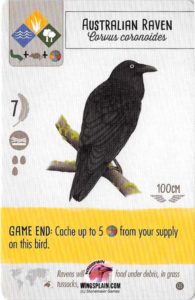
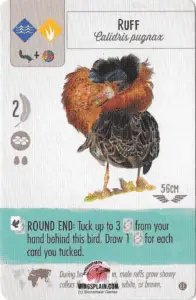
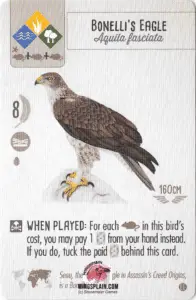
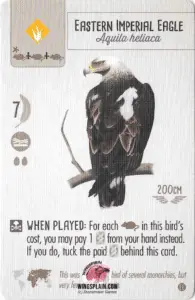
On the flip side, if a P4 player, or any player for that matter, happens to have six pieces of food lying around or a fist full of cards with no outlet for them, giving them more probably won’t make a difference in the long run. This ends up being true in situations where their Grasslands engine is scoring so many points that most birds are no longer worth playing. In this situation, the odds are in your favor that they won’t be able to capitalize on what you are giving to them.
As always, having a strong situational awareness and understanding the appropriate timing of shared resources will go a long way to helping you navigate heads-up play against the Power 4.
2. Play With the Oceania Expansion (OE) Mats
The OE mats have reduced the effectiveness of the Lay Eggs Action while improving the Gain Food and Draw Cards Actions. Raven-Gull/Deer on its own does not net any eggs when activating on the third slot of the Oceania Expansion play mat unless they get rid of one card or one food to secure the third egg.
This negatively impacts the effectiveness of their engine by creating an egg drought, but this does add Nectar to the mix. Nectar is a wild food type used for scoring extra points and Ravens can collect it with their power.
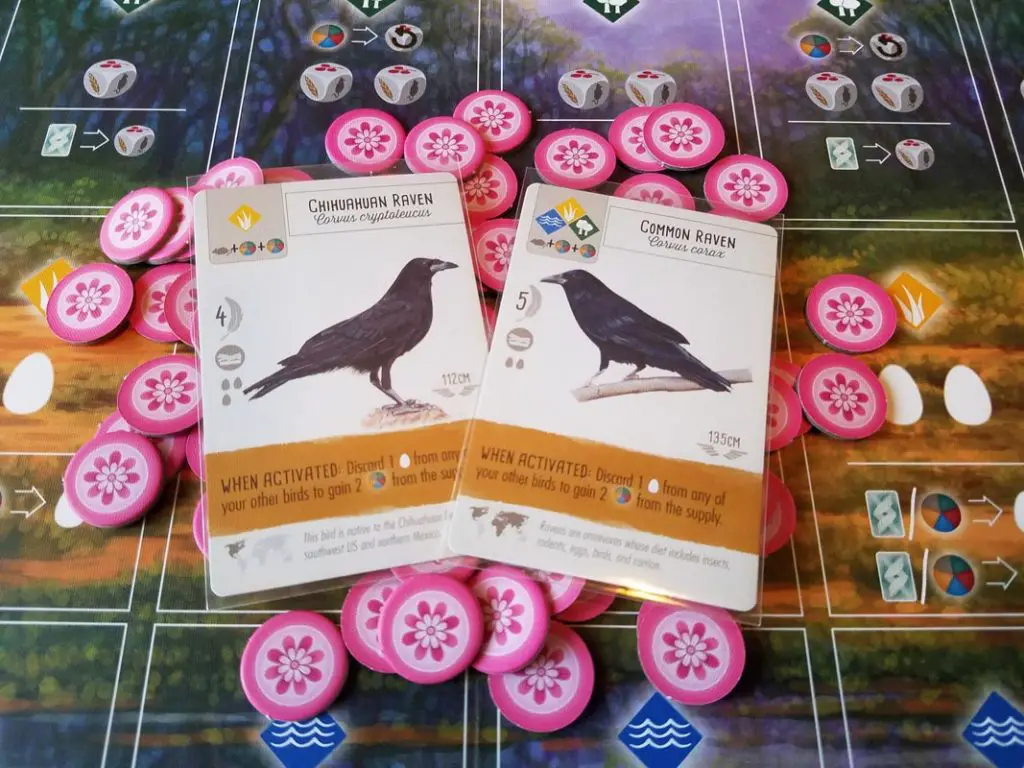
3. Fight Fire with Fire: Mirror Match
Raven-Gull/Deer
One of the easiest ways to combat Raven-Gull/Deer is with Raven-Gull/Deer. It is possible for two players to have one Raven and either Franklin’s Gull or Killdeer.
Common Myna
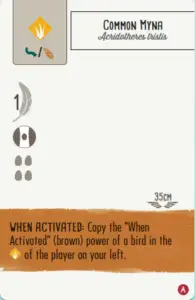
Introduced in the Asia Expansion, Common Myna has the uncommon ability to copy a Grasslands brown power of the opponent to your left. In two player games, this guarantees that if your opponent plays Power Four, you will be able to reap the same benefit. This is a very cheap and highly effective way to level the playing field!
4. Dig for High Impact Cards
Pie Billed Grebe/Ruddy Duck/Common Yellowthroat and Birds Like Them
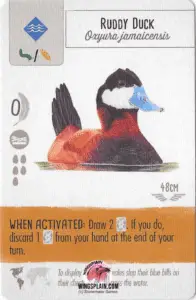
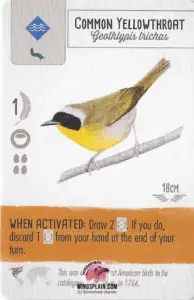
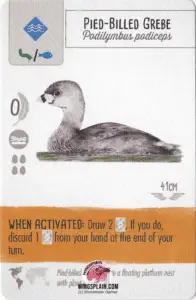
These birds are inexpensive. Anyone can afford to drop these cards on the first Wetlands space and start digging for good cards. You will be drawing three cards per activation, but you have to discard one at the end of your turn (hint: throw away the least helpful card). This puts you on more even footing with Gull/Deer. You get to see one more card than they do, but you are both only netting two cards. Their cards will come out faster if they have a Raven, of course. They are also netting one egg out of their activation.
These birds can also be effective egg banks, holding five eggs each. This could be useful for Round Bonuses; it gives you a good target for a Pink Power bird that lays eggs, and it opens up a path for emergent Egg Spam strategies. Pink Powered egg layers and aggressive point-scoring Grasslands engines are good ways to combat the Power 4.
Great Crested Grebe
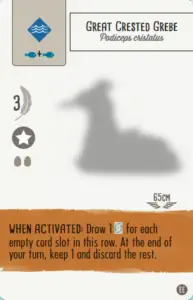
Two Fish for a three-point, two Egg , Star Nest bird might not seem worth it, but its brown power can be. With this in the first slot of your Wetlands, you are drawing five cards and discarding three per Draw Cards Action. Only one other card lets you dig this deep this early in the game.
After two activations, you’ve looked at ten cards and should have four in hand (not counting any starting hand cards). This is a serious card advantage that blows Gull/Deer out of the water. After two activations, they’ve only looked at four cards, and they’ve spent two eggs to do it. It’s much easier to drop these two fish cost birds from your opening hand with Oceania rules since you start with one nectar no matter what.
Wilson’s Storm Petrel
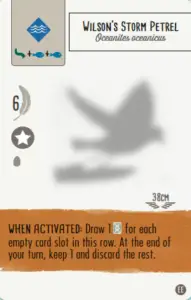
The other card with the same power as Great Crested Grebe. It costs one worm plus two fish, and that can be a lot to ask for in the early game, but luckily starting nectar helps with the inflated food cost. You’ll be seeing a lot of cards, but you could be in a bind as far as food goes. The Petrel isn’t too shabby at six victory points. It only holds one egg but has a Star Nest, at least.
If you play this (or the Great Crested Grebe, for that matter), you’re hoping to draw into fast food producers like Blue Gray Gnatcatcher or White Backed Woodpecker to help dig you out of your food deficit.
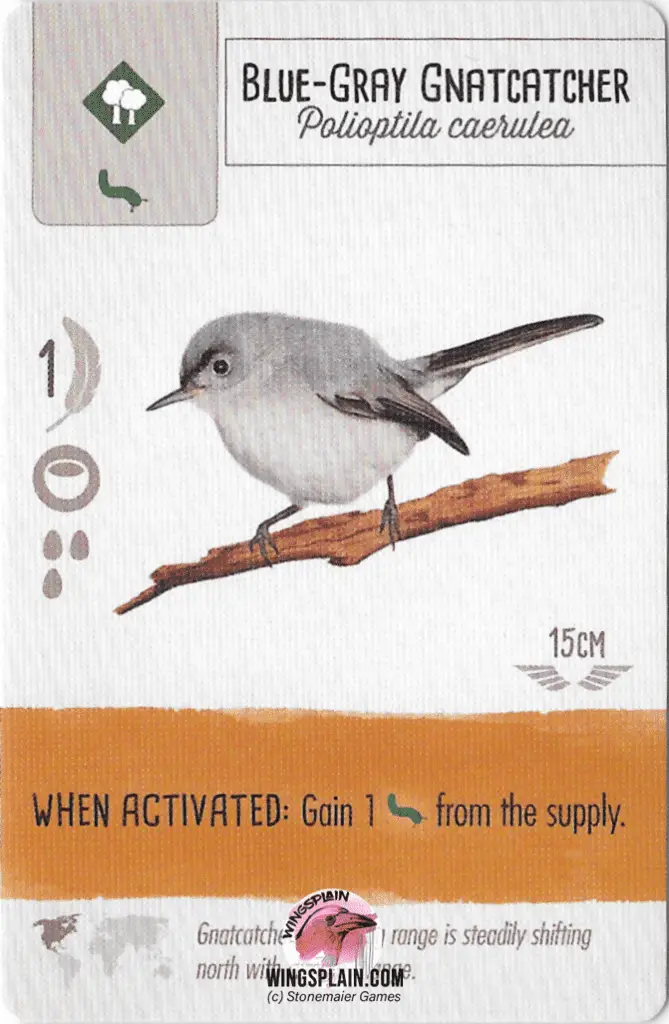
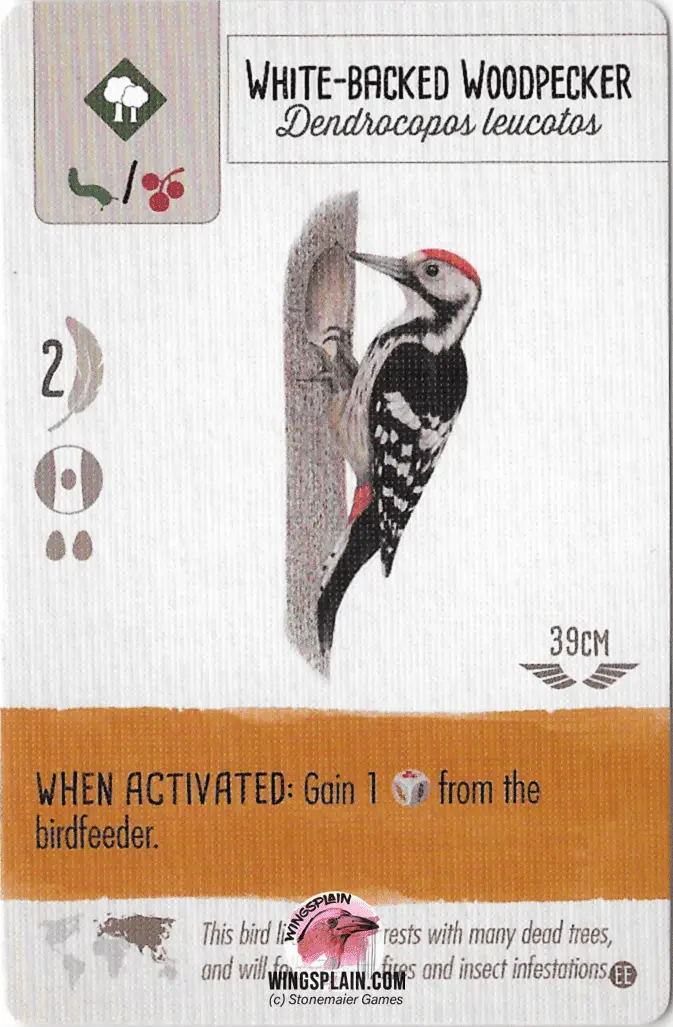
5. Fix your Food Issues
American Crow/Fish Crow
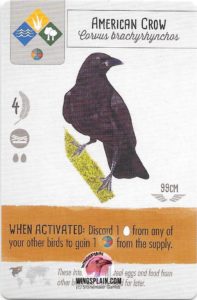
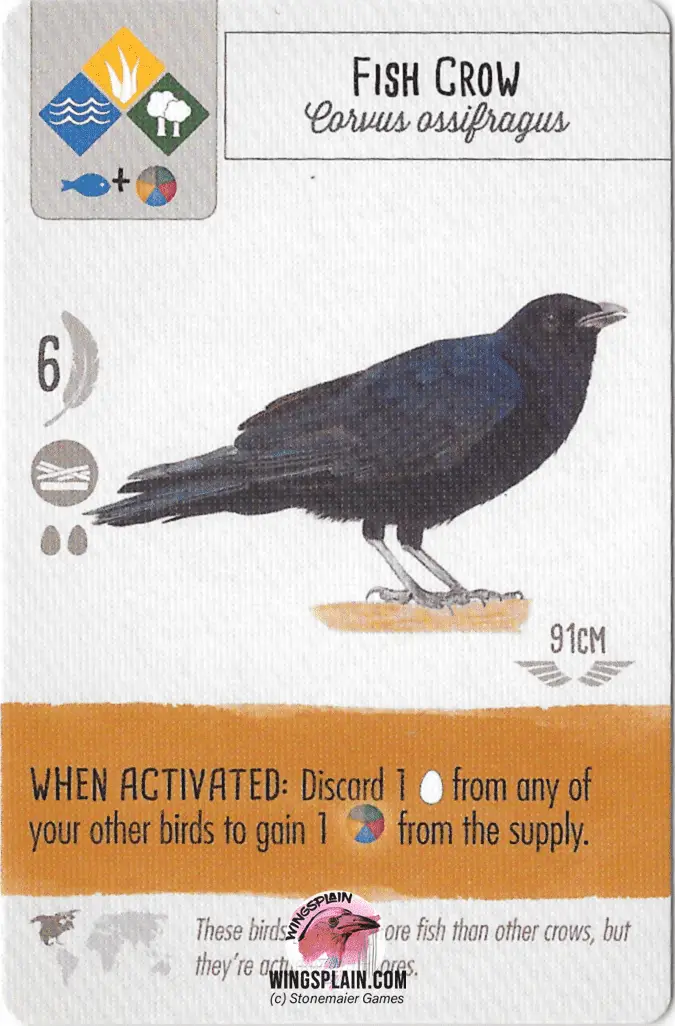
The weaker cousins of the Ravens. They have the exact same power, except they only get one food compared to the Raven’s two. American Crow is the one you really want, as it only costs one wild food to play! The crows might not be as powerful (the general consensus seems to be that they are fairly well balanced; what a difference one food can make), but they are cheaper and can start impacting the game sooner.
I have found that Crows can be effective when backed up by Grey Catbird or Northern Mockingbird. You’re spending twice the eggs for the same amount of food as a Raven, though (but if Ravens have proven anything, it’s that two food is worth a steeper price than they have to pay themselves). Taking a turn or two to repeat a Crow’s power can really help you get out of a food bind.
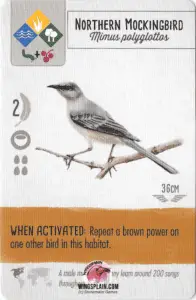
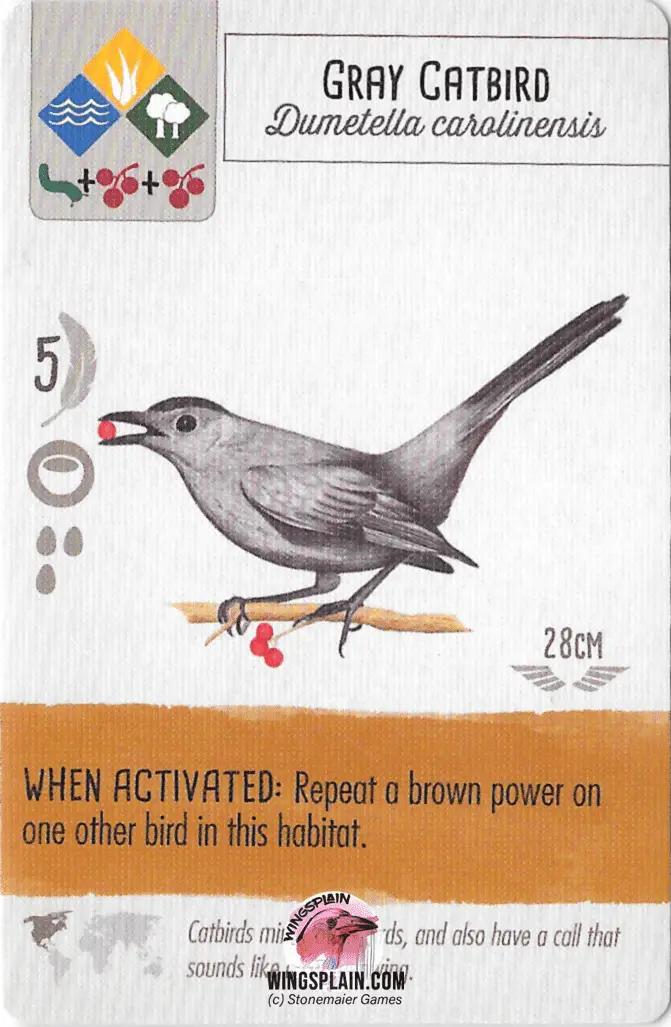
At first, this inflated egg cost from repeating a Crow power sounds like a bad deal, but there can be a psychological silver lining in some scenarios. When you’re burning through eggs that fast, you don’t have to worry about your overall egg capacity nearly as much as a Raven-based engine does.
Raven engines will have to take a turn or three to drop birds with a large nest size in order to preserve their ability to score points off eggs. The “Mocking/Crow” combo doesn’t need to worry as much about “over-laying eggs” and missing out on points.
I’ve gotten some criticism on this concept on the grounds that I am presenting a negative outcome as a positive outcome. Make no mistake, having fewer eggs is worse than having more eggs; there’s no debate there, but there will be times when you may be limited on egg capacity anyway, so the pressure of running out of space is going to be lessened if you’re spending more.
Let’s be real here; you’re trying to win a sprint, not a marathon. You need to “run at a high RPM” in order to keep up with Ravens.
It’s like discarding the third egg on your Red-Winged Blackbird to draw an extra card from the 2nd column of the Wetlands. You can’t lay a fourth egg, so you might as well spend one for extra resources. If your Mocking-Crow based game has filled up all of its nests or can do so easily (many birds with small nests), it doesn’t necessarily hurt it as badly to spend twice as many eggs.
You’re not going to get those eggs anyway, so why not repeat the crow and get more food? These scenarios can end up with a lot of birds and very few eggs, so you’re relying on bonus cards, round bonuses, and point-scoring brown powers to make up the difference on lost egg production.
Laughing Kookaburra and Birds Like It
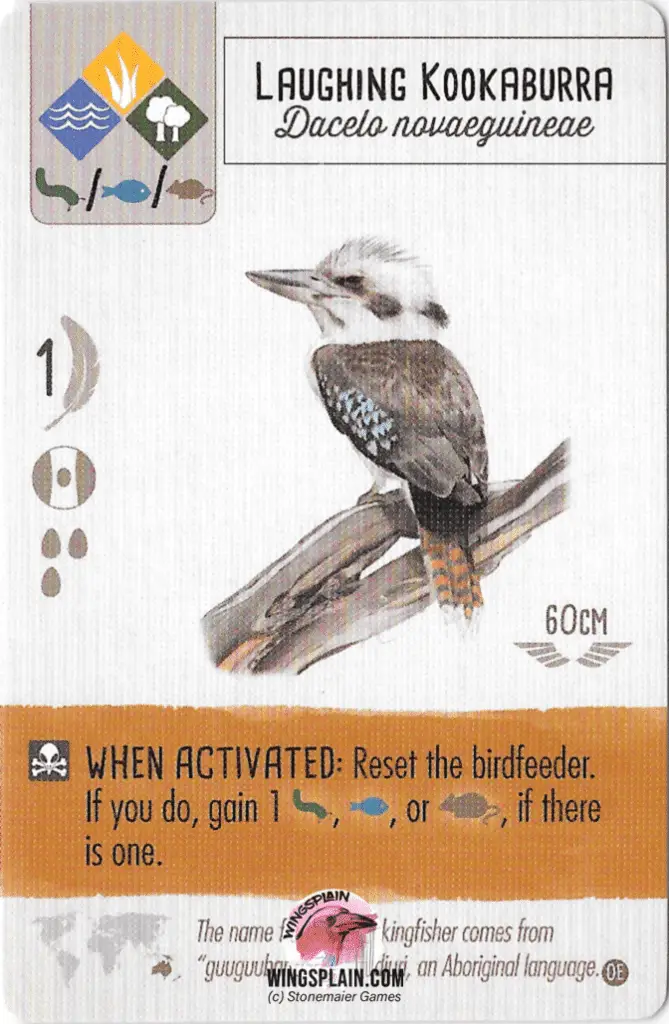
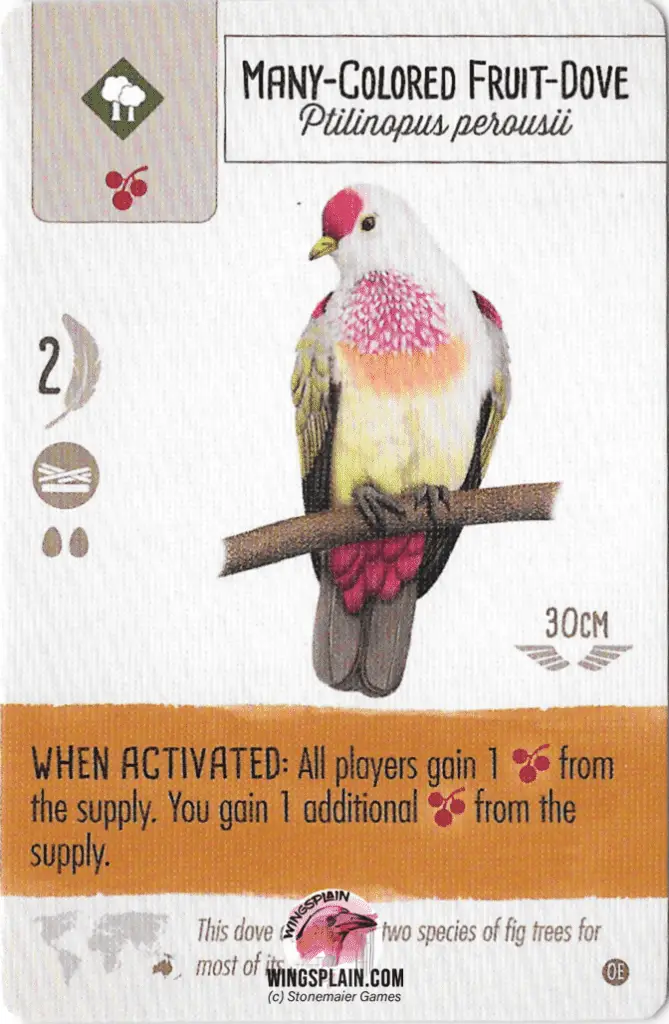
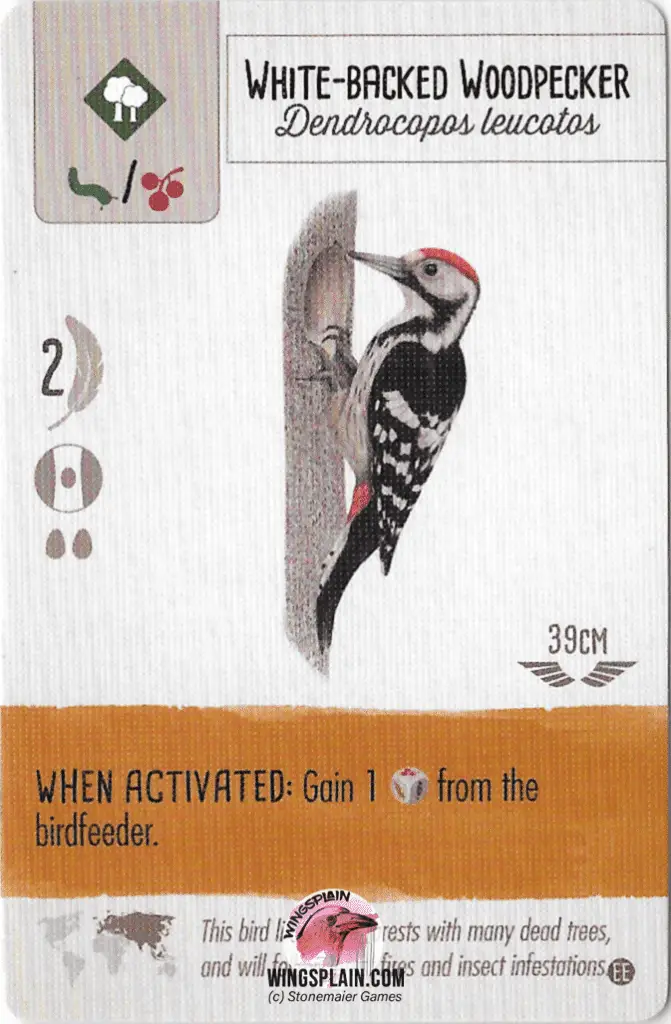
Laughing Kookaburra is cheap and versatile. You can stick it where you need it most and try to get an extra Worm, Fish, or Rat from the bird feeder. Each die has a 66% chance of showing one of these three faces.
There are many cheap and effective food-producing birds like the Kookaburra, so there are plenty of chances to see one and get it into play. Playing a couple of these birds into your Forest early will give you a head start on emerging Raven engines, whether you know they are coming or not.
Several birds, such as Indigo Bunting, European Bee Eater, New Holland Honey Eater, and Spotted Towhee, are compelling options that allow you to play the same game as Ravens, that is, generating eggs and food simultaneously in the Grasslands.
6. Pink/Teal Powers
Supplement your Board with Pink or Teal Powers but don’t go overboard. This alone won’t put you in a winning position, as there aren’t many of these powers specifically detrimental to The Power 4. Keep in mind that Pink Powers and some Teal Powers increase in effectiveness at higher player counts.
Dunnock (Teal Power)
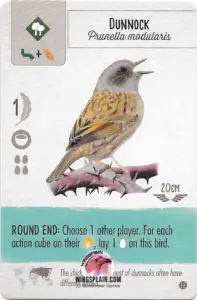
Playing this bird early could score you sixteen eggs over the course of the game by checking your opponent’s Lay Eggs Action one-to-one. Too bad Dunnock can only hold four eggs. You have to have a way to spend those eggs to keep getting more which makes it harder to use right out of the box.
Optimizing this card can be difficult, and it is otherwise a low-impact card. The more players you have, the more chances you have to trigger its power. How helpful it is depends on what else you have going on and what round you’re in.
I probably wouldn’t play it past round two unless it lines up with Round Bonuses/Bonus Cards, you have some way to use its eggs consistently, and it somehow nets you a decent chunk of points.
Hooded Crow (Teal Power)
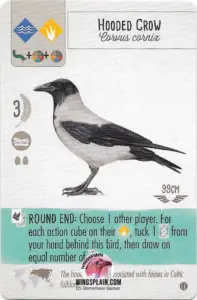
A Tuck/Draw bird with an expensive yet flexible food cost that checks your opponent’s Lay Eggs Action one-for-one. A good Grasslands supplement to a card-drawing engine in the Wetlands. You need cards to tuck, after all. If your opponent isn’t exceeding three Lay Eggs Actions per round, Ruff is strictly superior to Hooded Crow for scoring points (it’s cheaper and doesn’t rely on your opponent to trigger its power).
There will come a point in the mid to late game where your opponent doesn’t need to lean on Raven-Gull/Deer as hard, and Hooded Crow, like Dunnock, will drop off quite a bit in effectiveness as you near the end of the game unless your opponents are resorting to Egg Spam strategies, which is a powerful and common way to end games.
Eurasian Magpie
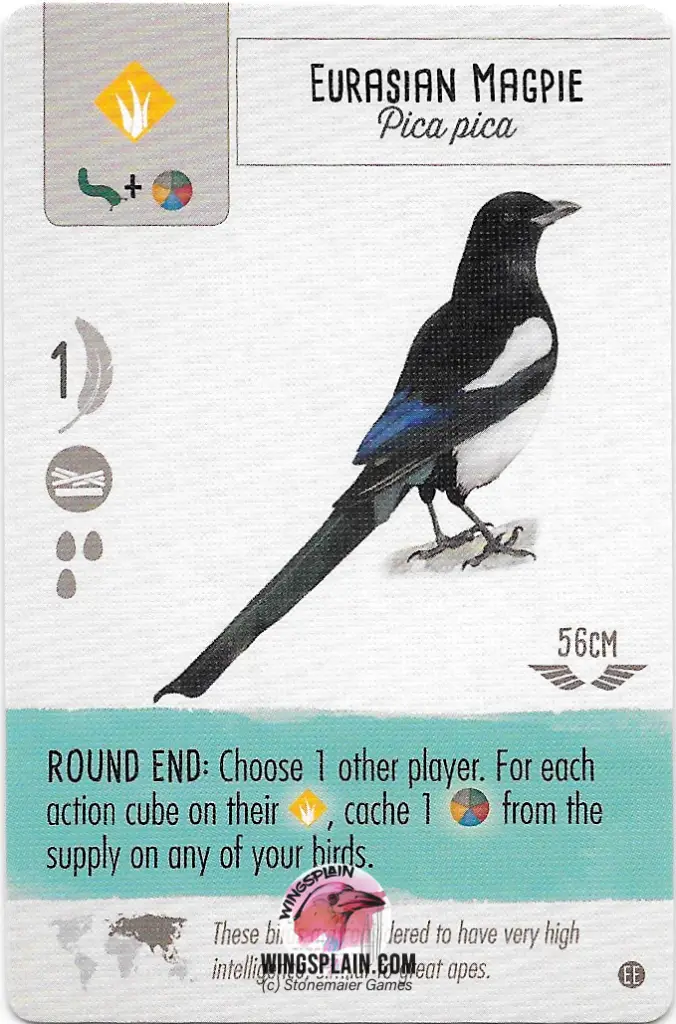
Eurasian Magpie can be a highly effective way to passively shave points off of an opposing Grasslands engine. Every time an opponent takes the Lay Eggs Action, they are giving you one free point and effectively negating one point off of their own engine. Watch this video where I used Eurasian Magpie, Red Breasted Merganser, and White-Throated Dipper to neutralize a round two Franklin’s Gull:
(Pink Powers) Birds that lay eggs when your opponent does
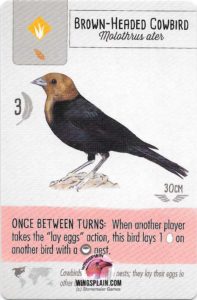
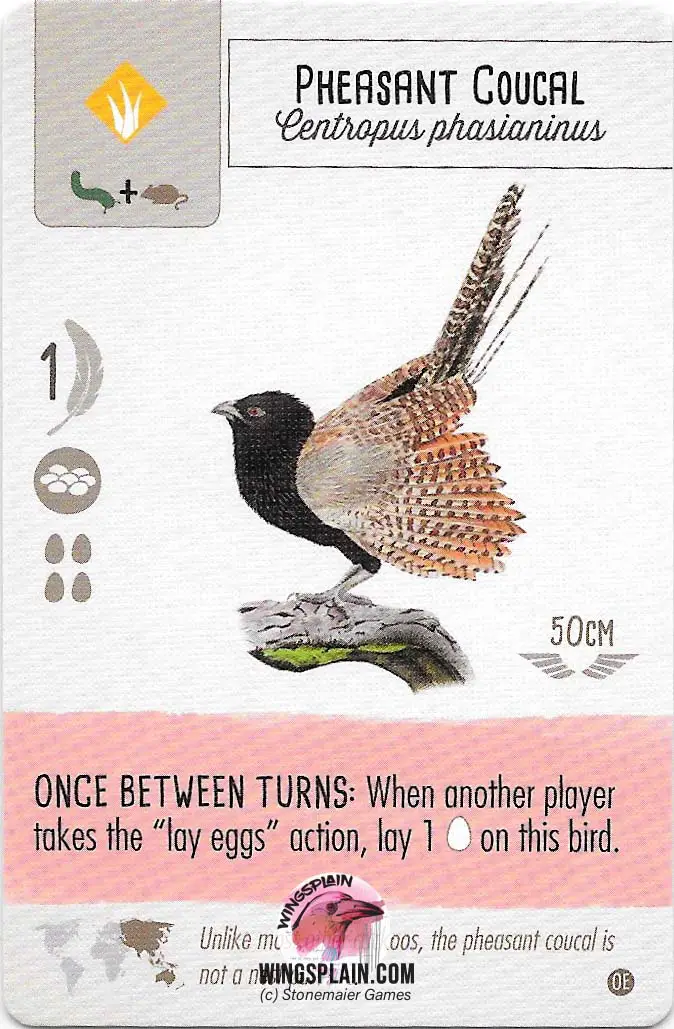
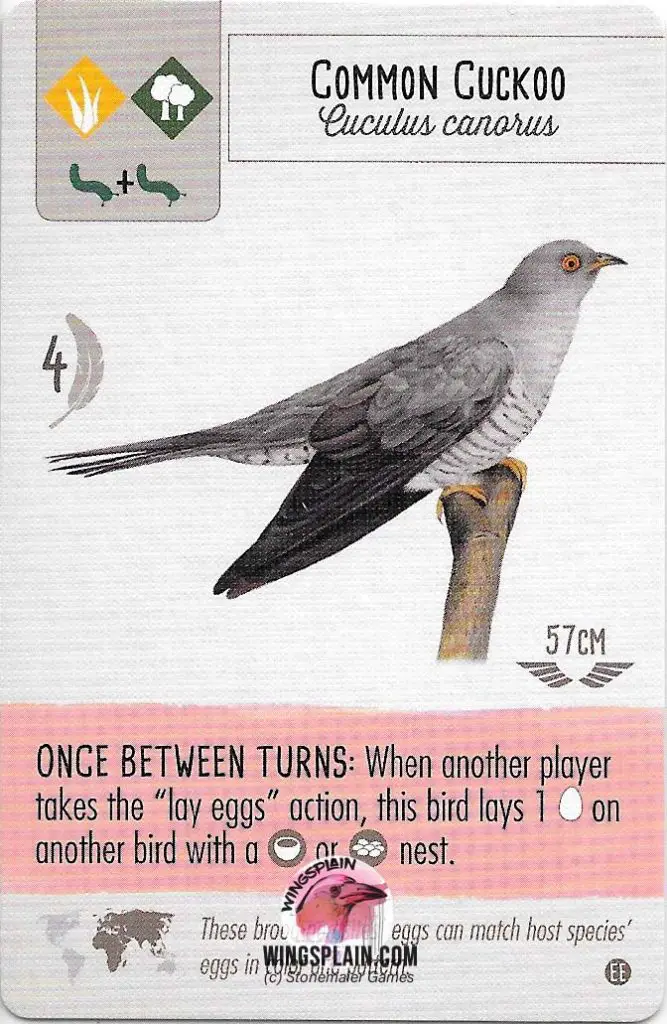
Try to have some Star Nests available to maximize Round Bonuses. Having multiple birds that can do this can really rack up some points for you.
(Pink Powers) Snow Bunting and European Goldfinch
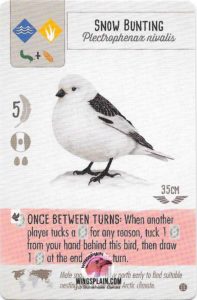
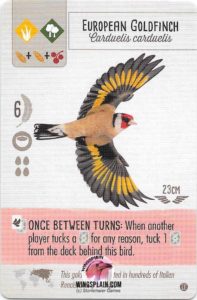
This two-card combo doesn’t attack The Power Four directly, but it does hinder the birds that commonly support all-powerful Grasslands engines, namely, birds that tuck cards. One or both of these birds on your board with cancel out the points scored by one or two opposing tucking birds.
(Pink Power) Spangled Drongo
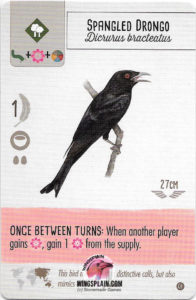
Once between turns, if your opponent gains Nectar, you gain one Nectar as well. Ravens are still two-for-one‘ing you on this deal, but at least they aren’t two-for-zeroing you. You can tell that this effect was perceived to be fairly powerful because this bird is expensive (yet flexible), has a low point total, and has low egg capacity.
If its power doesn’t pay off for you in some meaningful way, this bird gives you almost nothing for the cost of three food. If you’re of the opinion that Nectar is overabundant right out of the box, this bird is probably worthless to you.
And with that, on the tail of the Spangled Drongo, I think I’m going to bring this article to a close. Hopefully, it’s given you some insight on how to beat Ravens, how to beat Franklin’s Gull, and how to beat Killdeer in Wingspan. I also hope that it has given you a template in which to model your own assessments after.
I think the Power 4 has garnered a lot of attention amongst the community because they are the most obviously powerful cards. I believe that there are several other cards that are much more subtle but just as impactful as our beloved Corvids.
Check out this article, What Makes a Top Tier Card in Wingspan, for more on these birds.
Thanks for reading.
